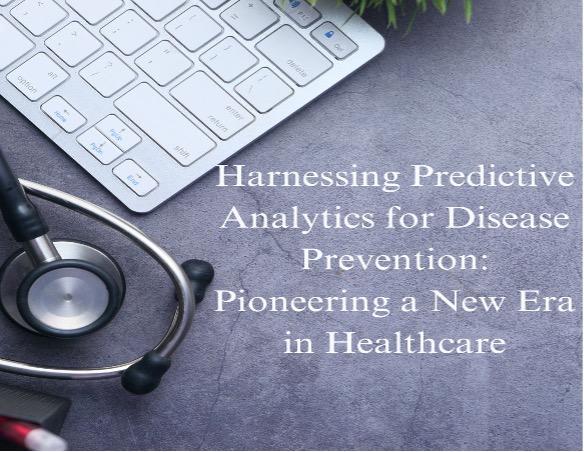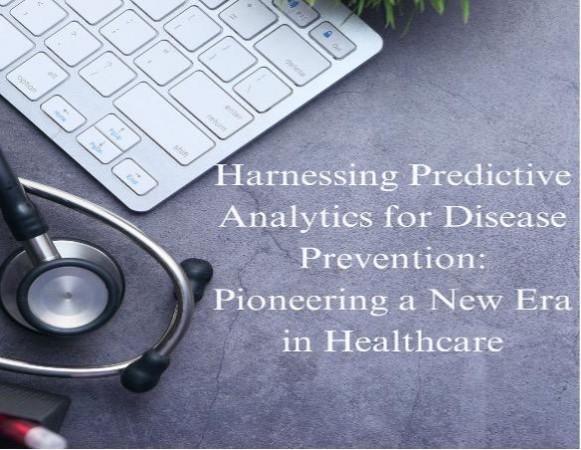Harnessing Predictive Analytics for Disease Prevention: Pioneering a New Era in Healthcare


In today’s rapidly developing digital landscape, Harpreet Singh, a visionary in healthcare technology, delves into the transformative potential of predictive analytics in disease prevention and public health. By integrating cutting-edge data science and artificial intelligence, the work highlights how predictive analytics is redefining healthcare management with personalized, proactive, and efficient strategies.
Revolutionizing Healthcare Through Data Integration
Predictive analytics thrives on integrating and analyzing diverse data sources. Modern healthcare systems generate vast information streams, including EHRs, wearable device data, medical imaging, genetics, and environmental factors. Combining these provides a comprehensive view of patient health, enabling early detection of risks and diseases. For example, integrating prescription records, claims, and environmental data has significantly improved chronic disease prediction and prevention. Studies reveal that predictive models using integrated data enhance accuracy by up to 20%. This holistic approach personalizes patient care while strengthening public health strategies, showcasing the transformative power of comprehensive data analytics in modern healthcare.
Risk Stratification: A Game Changer in Preventive Care
At the core of predictive analytics is risk stratification, a process that categorizes individuals based on their likelihood of developing specific health conditions. This method allows healthcare providers to allocate resources efficiently and intervene before diseases progress. For example, machine learning models have been shown to predict the onset of type 2 diabetes with an accuracy of 84%, outperforming traditional statistical methods. These insights allow for early interventions, such as personalized lifestyle adjustments or targeted medical care, significantly reducing the disease burden.
In cardiovascular health, predictive analytics is already making waves. Advanced models can identify patients at high risk of heart failure with remarkable accuracy, sometimes years before symptoms manifest. Such breakthroughs are providing critical windows of opportunity for healthcare providers to implement preventive strategies, thereby reducing hospital admissions and long-term healthcare costs.
A Broader Perspective: Predictive Analytics in Public Health
Predictive analytics isn’t just transforming individual patient care; it’s revolutionizing public health management. By analyzing patterns across large populations, these tools help detect disease outbreaks earlier, identify long-term health trends, and guide proactive measures to mitigate risks. For example, during the COVID-19 pandemic, predictive models analyzing mobility patterns and search engine queries successfully forecasted regional outbreaks, giving public health officials crucial lead time for interventions.
Moreover, analytics-driven strategies have been pivotal in managing infectious diseases and chronic public health issues. Predictive tools analyzing vaccination data and population density have forecasted disease spread with over 90% accuracy, leading to targeted vaccination campaigns and public awareness programs. These initiatives have proven critical in containing outbreaks and saving lives.
Chronic Disease Management: A Tailored Approach
Chronic diseases like diabetes, cancer, and heart disease demand sustained attention and resources. Predictive analytics offers personalized solutions by leveraging large-scale patient data to forecast susceptibility, monitor progression, and guide interventions. For instance, machine learning algorithms analyzing genetic, clinical, and lifestyle data have identified high-risk individuals with unprecedented precision.
This tailored approach is also improving medication adherence and treatment outcomes. AI-powered apps, for example, optimize medication schedules based on individual habits and health conditions, significantly increasing adherence rates. Additionally, predictive models have redefined screening protocols by stratifying patients based on personalized risk profiles. In breast cancer management, for instance, analytics-driven screening strategies have increased early detection rates by 27%, allowing for timely treatment.
In conclusion, Harpreet Singh’s exploration of predictive analytics highlights its transformative potential to revolutionize disease prevention and public health. By leveraging data and advanced analytical techniques, the healthcare industry is advancing toward a future defined by precision, efficiency, and proactive care, ultimately reshaping patient outcomes. These innovations pave the way for healthier communities and a more sustainable healthcare ecosystem.
link







